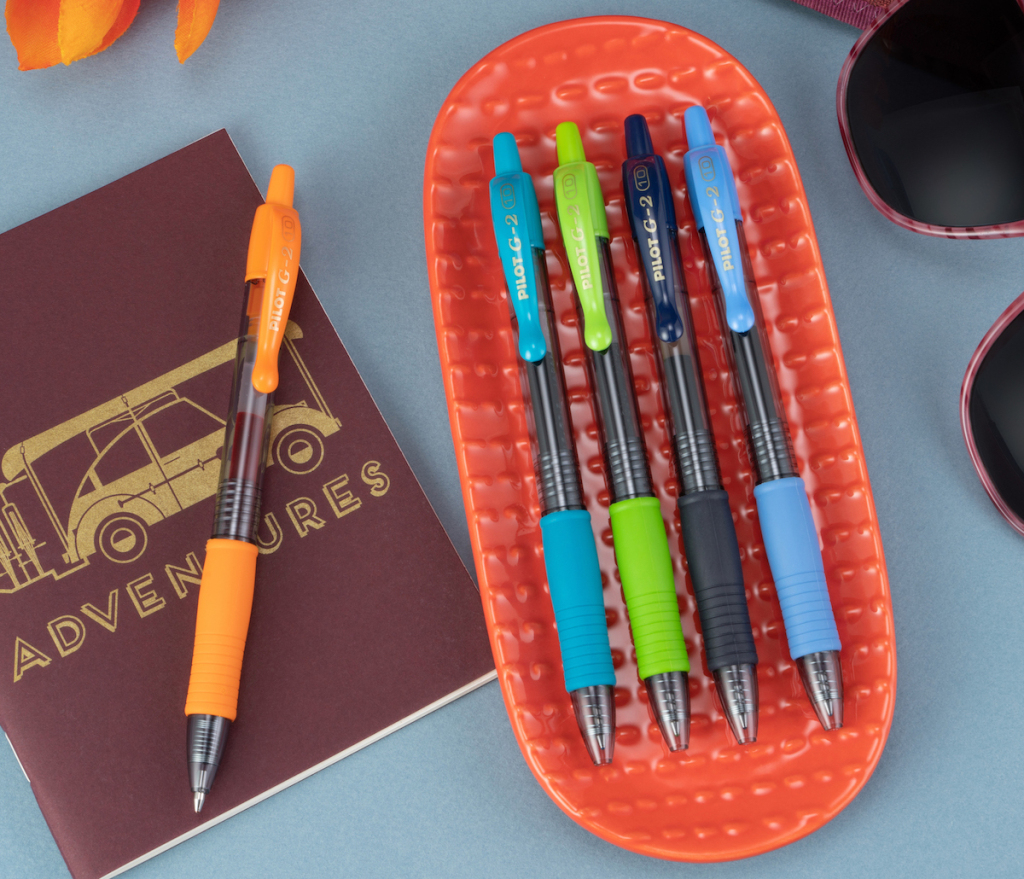 Pilot
Pilot
What do you get when you cross a fountain pen with a ballpoint? Why, something like a gel pen, which combines the fluidity of the former with the roller-ball tip of the latter. A gel pen provides the advantages of both—a smooth line that doesn’t skip as you write, flowing out of a point that doesn’t break or deform under pressure like fountain pen nibs sometimes do.
Gel pens were first introduced in Japan in 1984 by the Sakura Color Products Corporation of Osaka and became available in the United States several years later. Their most distinguishing feature can be inferred from their name: Instead of the oil-based ink found in ballpoints or the thin, dye-based ink (similar to fountain-pen ink) found in rollerballs, they use pigments suspended in a water-based gel made from xanthan gum and polyacrylate thickeners. This results in a smoother ink flow, as well as more vibrant color. There are, however, some drawbacks to gel pens. They use more ink than ballpoints, and the ink can take longer to dry.
Both inherent vices, though, have been eased somewhat by Pilot’s G2 Premium Gel Pen, which uses less ink and dries faster. The G2 bills itself as “America’s #1 selling pen,” and hype or not, it’s certainly the most widely available; you can find G2s everywhere, from pharmacies and supermarkets to stationery shops and big-box stores. The G2 is easily refillable, and its point advances and retracts with a solid click of the end cap button. The G2 also has a ribbed-gel grip for easy handling and writes evenly throughout the life of the ink cartridge, which is quite lengthy compared with the competition.
G2 points comes in four sizes: bold (1.0mm), fine (0.7mm), extra fine (0.5mm), and ultra fine (0.38 mm). But no matter the thickness of the line, the G2 always lays it down without smearing or gunk. Depending on size, the standard G2 comes in up to 15 ink colors, from black to periwinkle (we are fond of the navy, which approximates classic fountain-pen blue). But there are other G2 product lines that offer more in the way of colors—neon and metallic, for example—and other bells and whistles. The G2 Fashion and G2 Mosaic feature decorated barrels and the G2 Limited a more ergonomic body, while the G2 BCA promotes breast cancer awareness and the G2 B2P is made from recycled plastic water bottles. (While big retailers might not carry every option, you can search them out at specialty stationers.)
Most G2 models are in the under-$5 or under-$10 price range, though some run between $20 and $50. And if you have money to burn, the Pilot Nakimi Rolling Ball Pen, which uses G2 refills, can be yours for around $400. Regardless of what you spend, G2 quality is the reason why it’s the most ubiquitous pen in the United States.
Source link : https://www.artnews.com/art-news/product-recommendations/anr-loves-pilot-g2-pen-1234603246












